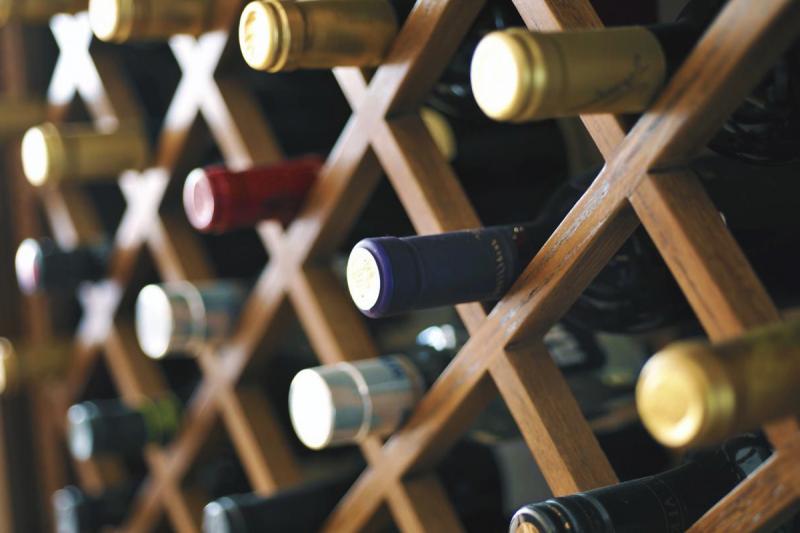Welcome to 2019. Looking forward to a great year and wishing all the same. I’m typing this on the last day of 2018. Happily, it was a good year in our area. Nearly all are aware the weather out west was difficult. While drought is a huge problem for many, it often portends a good wine year, as roots of vinifera dig deep in a search for water. Roughly 30 percent of the vineyards in California still don’t employ drip irrigation. There is a vast amount of info, pro and con, concerning irrigation for crops. A casual observer would note that water brought life to the Negev in Israel and the Imperial Valleys in Cali. Literally, both were deserts unable to support crops less than 120 years ago. A 2008 Science Daily article illustrates how new the proper use of irrigation is: www.sciencedaily.com/releases/2008/05/080519134750.htm. For our purposes, the primary factors are easy. Generally, drought-impeded vines produce less juice but better concentration.
This usually leads to better wine but higher prices. Yields down = prices up. It does appear to me that with a few very well-known, limited-production, famous labels, top-flight wine is bumping up against the upper limit of price/value. Better-made, lower-priced wines seem to be racing to the bottom as the industry consolidates and large players snap up financially foundering small vineyards and wineries. “Follow the winemaker” doesn’t always work anymore as the industrialists, in a relentless drive toward mediocrity driven by price competition, turn to mercenaries to replace Mom & Pop. It would be helpful if readers sent some more feedback on the types and price structures they would like me to cover.
In an effort to serve readers better, I wish to remind all that I am happy to answer questions sent to my email, chjonmc@yahoo.com. Those with general appeal will appear in the column. All are answered. Sometime it takes a while. Here’s an example of one toughie from David in Lewes: “Acquired the pictured bottle at the Hardy’s vineyard in Adelaide, Australia in 1967.
“The bottle has remained unopened in the back of various liquor cabinets around the country waiting for a good opportunity to open it. Recently I noted online that some bottles of the same wine of a later vintage appear to be valuable. Do you know if my bottle would be of value to a collector or connoisseur?”
David, the pictures helped. I was able to dig up more info on the wine, a 1943 bottle of Hardy’s Reserve Bin Show Port Bin # C 255. I needed to research. Although the Hardy’s label is still around, the producer has gone through at least two consolidations (been sold to conglomerates). Contacting a knowledgeable person has been impossible to date. The last contact I could find was cellardoor@tintara.com.au. I’m still waiting to hear from them. However, I did learn that one bottle had been sold at auction in 2013 for $90. The disclaimer was “cellar damaged label.” Other Show Port Bins from the post-WWII era were auctioned in the $25-$60 range. It seems to me that the value would be in the drinking, David. Because this is a fortified wine, there is a very good chance it is still drinkable.
That writ, there are some lessons here. If you are a cellarer, even one who has no interest in reselling, try to avoid damaging labels and wooden cases. You may change your plans 20 years from now about reselling. A detailed provenance (source, life cycle and storage) is key to value. Serious collectors look at provenance before nearly every other criterion. Christie’s is one of the most famous auction houses. You can find a great piece on proper handling here: https://www.christies.com/features/Wine-provenance-and-why-it-matters-8592-3.aspx. One factoid is not covered in the article. A quick check for those wishing to buy wine with a poor provenance, on a lark, is to check the shoulders of bottles with corks. Shoulders refer to the fill level. A low shoulder level indicates the cork may have dried at some point, allowing evaporation, oxygen intrusion and probable spoilage. Some shrinkage is to be expected over time. It takes a practiced eye to ascertain what is appropriate. Expensive wines normally employ better corkage, increasing their lifespan. Sweet wines like Port, Sauternes, and Auslese to Eiswein, among others, will cellar much longer than the general drift
Higher-alcohol fortified wine also enjoys longer shelf life and will endure poor storage better. With cool temperature, darkness, a good cork, and placing bottles on their side, these will outlast most of us.




















































